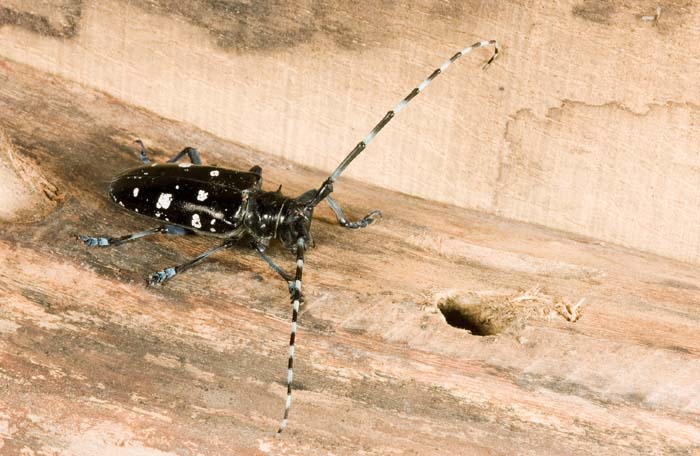
Tree health authorities are appealing to the public to be on the alert during August and September for two species of beetle which could damage a wide range of trees and shrubs if they became established in the United Kingdom.
Eradication action taken against an outbreak of Asian longhorn beetles with the co-operation of local landowners in Kent last year appears to have been successful. Further monitoring will be carried out in the area over the next three years to confirm this, or deal with any remaining beetles. The earlier an outbreak is detected, the greater are the chances of a successful response, and the smaller the area over which host trees must be removed to achieve eradication.
The call comes as part of wide-ranging efforts to step up the UK's defences against tree pests and diseases. Government is taking a range of measures, and action is already under way to implement two of the recommendations in the recent report of an independent Tree Health and Plant Biosecurity Expert Taskforce: a prioritised risk register and improved preparedness for dealing with outbreaks.
Work done so far on the risk register has confirmed that Asian longhorn beetle (ALB) and its close relative citrus longhorn beetle (CLB) represent a major threat, and that imported wooden packing material is a key potential pathway for these and some other tree pests.
Workers at places which might have received deliveries from Asia of tree and shrub plants, and goods in wooden crates and packaging, are being asked to watch for signs of the beetles. These insects could have been accidentally introduced to the UK in such imports over recent years, particularly from China, Japan and Korea.
The summer months are the best time to spot the large black and white beetles as they emerge from trunks and branches, spread to other trees, and lay eggs.
Martin Ward, the UK Government's Chief Plant Health Officer, explained, "Government plant health services cannot do this work alone, and we need the public to act as our eyes and ears in gardens, parks, woodlands and workplaces to help us spot threats quickly before they become a serious problem.
"The public can really help us at this time of year by looking out for these two potentially serious beetle pests. They thrive in climates similar to ours, and their establishment could result in losses of trees from a wide range of species."
Dr John Morgan, Head of the Forestry Commission's Plant Health Service, endorsed Mr Ward's comments, adding,
"There are strict controls in place to protect the UK against accidental introductions of these pests, but we need to back these up with constant vigilance and reporting of suspected cases. These beetles could threaten a wide range of ornamental, fruit and woodland trees, and the public and trade have a vital role to play in protecting our trees."
Adult beetles of the two species are very similar to each other, and easy to recognise. They are large and black with variable white markings, giving rise to the Asian longhorn beetle's alternative name of "starry sky beetle". Their distinctive antennae can be up to twice as long as their bodies (giving rise to the term "longhorn"), and are black with white or light blue bands.
